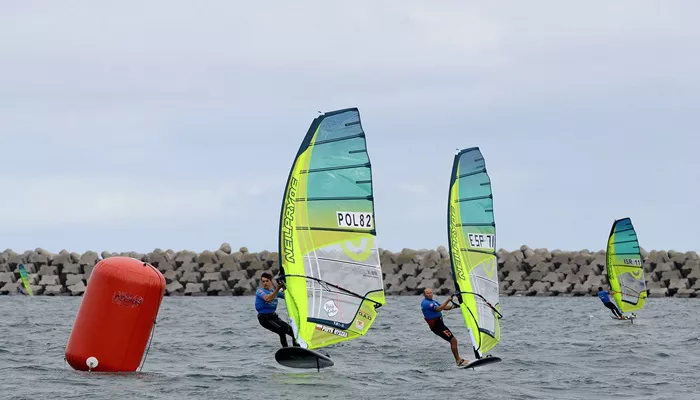Windsurfing traditionally relies on the power of the wind. However, many enthusiasts wonder if it’s possible to enjoy this sport even when the breeze disappears. In this detailed windsurfing guide, we explore techniques, equipment adaptations, and creative methods for windsurfing in little to no wind conditions. Understanding your options can turn even a windless day into a rewarding experience on the water.
Understanding the Role of Wind in Windsurfing
Wind provides propulsion in traditional windsurfing. It fills the sail, pulling the board forward. Without sufficient wind, the sail cannot generate enough lift or momentum. Typically, a minimum of 5 to 7 knots is needed for beginner-friendly sailing.
Challenges of Windsurfing Without Wind
Without wind, you lose your main driving force. Movement becomes sluggish. Sail pumping becomes ineffective beyond a few meters. Directional control weakens. Staying balanced becomes more difficult because the sail offers less stabilization.
Can You Really Windsurf with No Wind?
Technically, yes, but with major limitations. In dead-calm conditions, conventional windsurfing is impractical. However, alternative activities can simulate or adapt the experience for light wind or windless environments.
Techniques for Light Wind Windsurfing
Sail Pumping: Rapidly pulling and pushing the sail can create slight propulsion, enough for movement in very light air.
Body Movement: Shifting your body weight, using micro-swells, and foot steering help navigate short distances.
Board Paddling: Laying or kneeling on the board and paddling by hand provides forward momentum, similar to stand-up paddleboarding.
Adapting Equipment for No Wind Windsurfing
Choosing the right gear is critical. Larger boards with higher volume offer better flotation and stability. Opt for sails designed for light winds — usually larger and lighter materials. Specialized “light-wind” rigs enhance performance even in marginal conditions.
Best Board Types for No Wind
SUP Windsurf Boards: Stand-up paddleboards fitted with windsurf mast tracks provide dual functionality. You can paddle when windless and sail when the breeze picks up.
Longboards: Traditional longboards have centerboards and excellent glide efficiency, ideal for light air conditions.
Wide Boards: Wide, stable boards allow easy balance when the sail lacks power.
Practice Skills in Calm Conditions
Windless days offer perfect conditions to refine basic skills:
Uphauling: Practice lifting the sail efficiently without stressing your back.
Foot Placement: Improve stance, weight distribution, and foot transitions.
Balancing: Hone micro-balance adjustments without the distraction of strong winds.
Sail Handling: Get comfortable with rig manipulation, flipping the sail, and steering with sail angles.
Training Benefits of No Wind Windsurfing
Practicing in no-wind conditions builds muscle memory, strengthens core muscles, and improves technique. It removes the complexity of speed and focus shifts to body mechanics and board control.
Creative Ways to Enjoy Windsurfing Without Wind
SUP Windsurfing: Paddleboard with a windsurf rig in calm lakes and lagoons.
Light Wind Freestyle: Perform low-speed tricks like sail 360s, upwind 360s, and duck tacks.
Fitness Sessions: Combine paddling with balance drills for a full-body workout.
Partner Games: Try tow-surfing where a partner pulls you with a rope from another craft like a kayak.
Safety Considerations in No Wind Conditions
Always wear a buoyancy aid.
Stay within swimming distance of shore.
Inform someone before heading out.
Use a leash if paddleboarding or paddling the board.
Carry a whistle or phone in waterproof casing for emergencies.
When Not to Attempt Windsurfing Without Wind
Even if conditions seem calm, avoid heading out if:
- Strong currents are present.
- Storms are forecasted soon.
- Cold temperatures increase hypothermia risk.
- You’re unfamiliar with the area’s tides and terrain.
Ideal Locations for Calm Water Windsurfing
Protected Bays: Flatwater and minimal currents make these ideal.
Lakes: Consistent shallow water allows easy paddling and practice.
Lagoons: Natural barriers reduce wave action and wind dependency.
Training Drills for Light Wind Mastery
Use no-wind conditions for specific drills:
Practice pivot gybes at very slow speeds.
Drill beach starts and waterstarts without pressure.
Perfect non-planing tacks and sail transitions.
Balance while moving the sail overhead to simulate real-time maneuvers.
Windsurfing Exercises on Land
Land training improves performance even without water access. Use simulators or rigging setups to rehearse:
Harness usage and pressure points.
Hand positioning and sail pumping rhythm.
Footwork drills to speed up board transitions.
How Professionals Train in No Wind
Many elite windsurfers use light-wind or no-wind sessions to sharpen mental focus. They visualize moves, work on timing, and develop muscle coordination. They also refine balance by standing on unstable surfaces like balance boards or Bosu balls.
Building Mental Strength on Calm Days
Windsurfing with no wind teaches patience, adaptation, and determination. Calm sessions foster mental toughness, essential for facing tough windsurfing challenges later.
Embracing the Windsurfing Lifestyle
Windsurfing isn’t just about adrenaline and speed. It’s about connection with water, weather, and nature. Even when the wind stops, the passion for progression continues. Following a comprehensive windsurfing guide ensures continuous growth, no matter the conditions.
Conclusion
While traditional windsurfing requires wind, creative adaptation allows the sport to continue even in calm weather. Practicing technical skills, using SUP boards, and finding innovative ways to train ensures you can still make the most of windless days. Every session, even a quiet one, contributes to building a well-rounded windsurfing experience. Follow a reliable windsurfing guide to maximize your time and skills on the water, wind or no wind.

